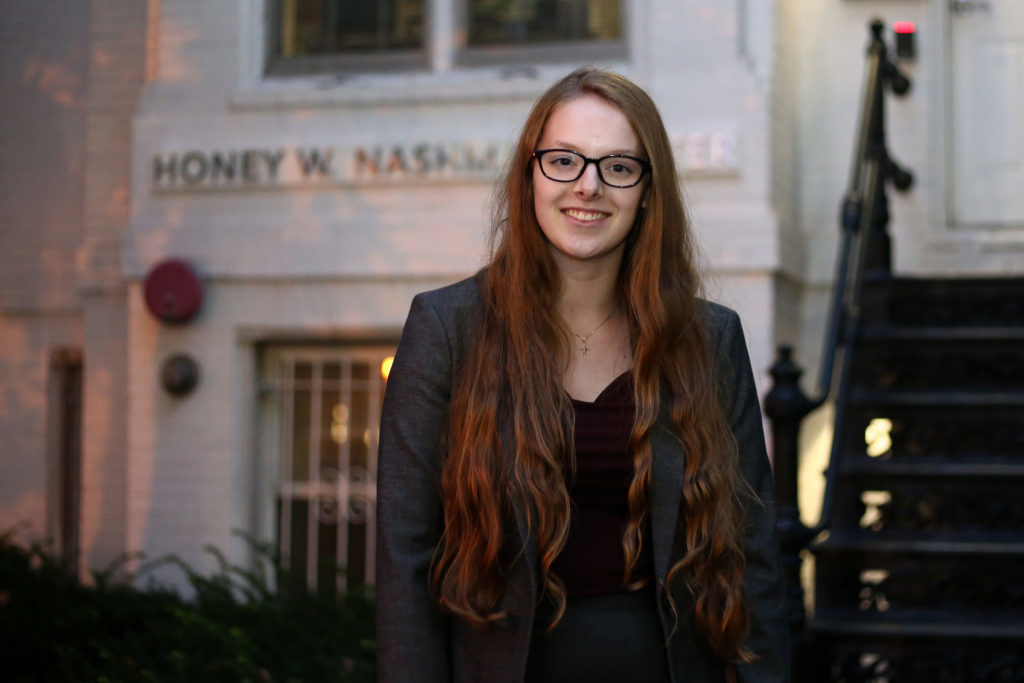Student organizations have a new platform to track community service hours.
The Nashman Center for Civic Engagement and Public Service switched from the tracking service NobleHour to GWServes, a new website that allows student organizations to log their service hours and advertise volunteer opportunities, at the start of the academic year. Student leaders said the new system could motivate students to become more involved with service by channeling all opportunities into a central list for students to find and track events.
Previously, students could individually record service hours on NobleHour, but could not track hours for their entire organization.
Under the new service, student groups can list opportunities for anyone to participate in community service. Student organizations can also register to participate in other groups’ community service events.
Amy Cohen, the executive director of the Nashman Center, said the new service allows students, organizations, faculty and staff to look up and share volunteer, service learning and civic engagement opportunities. Last academic year, student organizations used spreadsheets to record community service hours before transitioning to the new service, she said.
“GWServes, as a tool, makes it easier for every school, every department and every organization to access and record service, whether that is a long-term community-engaged research project, a course or day of service,” Cohen said in an email.
Nashman Center employees created focus groups in the spring to learn about how to record service hours before officials officially launched the new system in August, she said.
Cohen said officials needed to switch programs because the previous provider was mainly used for individual students. Under the new system, student organizations can connect with one another in “one easy-to-use place,” and students can more easily record their organization’s service hours.
To teach students about the new system, she said officials formed a GWServes Ambassador Team comprised of undergraduate and graduate students. The group hosted its first event last month to help students learn how to use the system, and employees are working with nonprofits in D.C. to create websites for organizations to “attract GW faculty, staff and students to help support their organizational needs,” she said.
“We will be able to see the difference each individual makes and to see how the impact of one person or group relates to the overall impact GW is making within our community,” she said.
In past years, students campaigned for an easier way to track service hours because student organizations previously employed a host of different ways to log hours. The University began tracking service hours officially through an online service launched in 2009.
Student leaders said the new system will incentivize students to record service hours and seek other opportunities for service on and off campus. On its homepage, GWServes includes three buttons for students to search for service opportunities, list events and track the number of service hours organizations have accumulated.
Sophomore Abigail Sepich, the treasurer of Circle K – a community service organization – said the new platform gives the “opportunity for recognition” as a group that actively participates in community service. She said the platform could also be a “point of proof” for incoming students to verify a club’s level of activity in the community.
Previously, she said Circle K recorded community service hours through its national organization’s tracking system.
“I also think it might incentivize other people who do service to feel like they’re getting some sort of recognition,” she said.
Students are recognized for their service with the President’s Volunteer Service Award, which is issued by the White House upon completion of 100 hours of community service.
Junior Yasmine Boukadoum, the volunteering committee chair of GW UNICEF, said she decided to incorporate the tracking system into the volunteering element of her organization because members did not previously track their service hours, preventing students from being eligible for service scholarships.
“For our members, it’s an incentive to actually go and do some volunteer work so that’s great,” she said. “It’s a motivation to do volunteering work if we know that we can get a reward out of it.”
Emily Geiger, a senior and the co-president of Relay For Life at GW – an organization that raises money for the American Cancer Society – said the new system could encourage more students to take the first leap toward engaging in community service by listing all service opportunities in one place.
“Sometimes, the hardest part is just getting starting with the process,” Geiger said. “This system allows us to figure out what may be the best fit and where other student orgs have volunteered at and see what might be popular or what would be related to the goals of our organization.”





